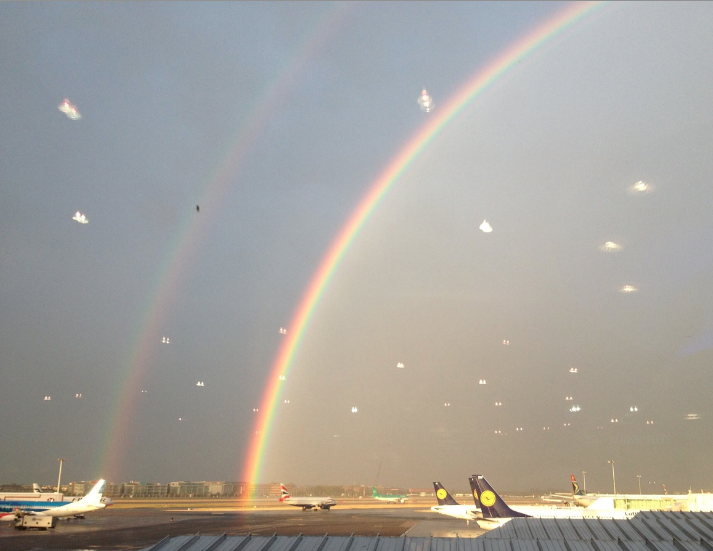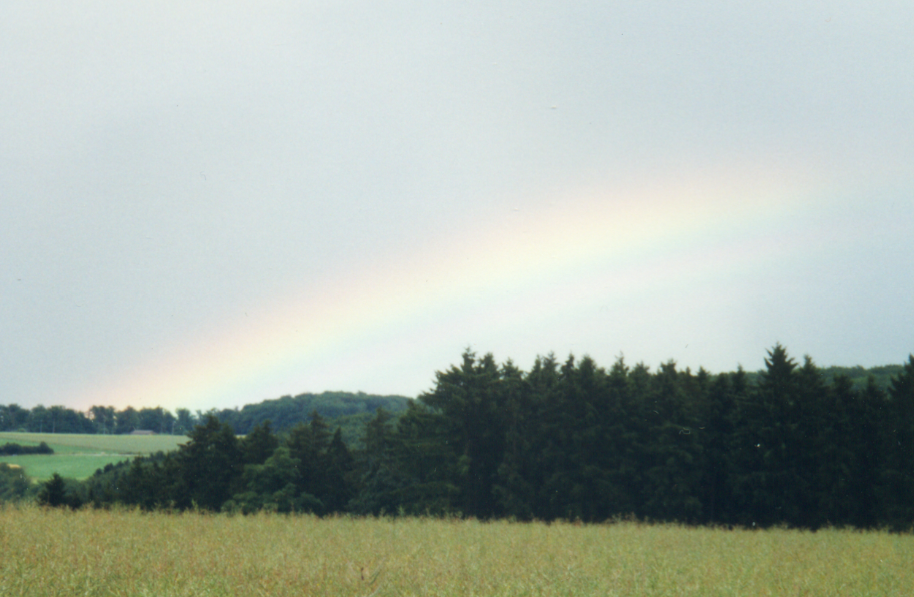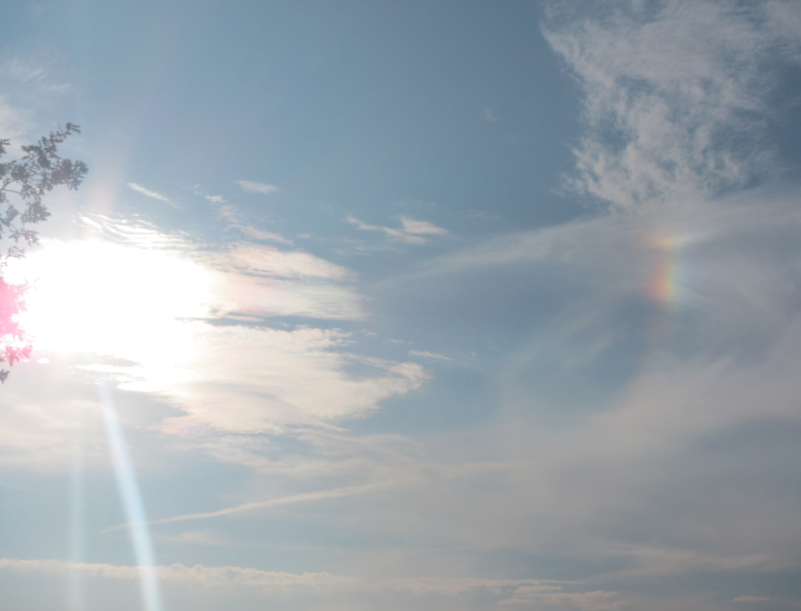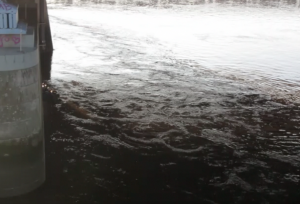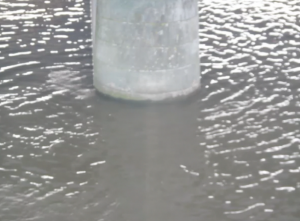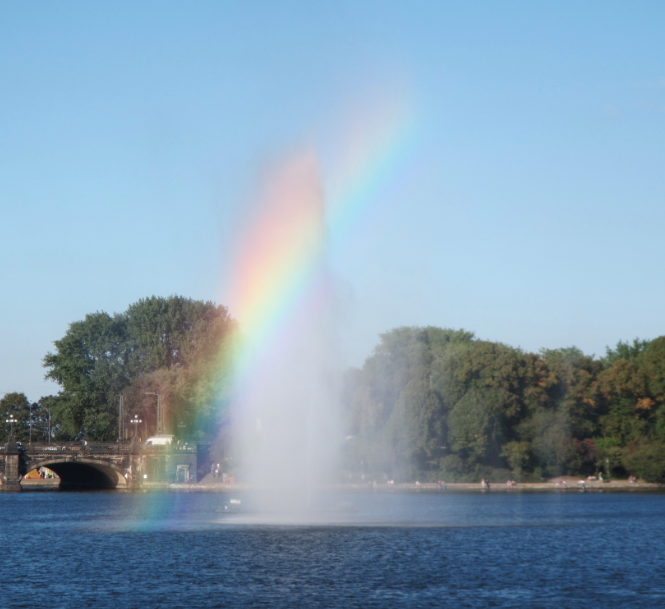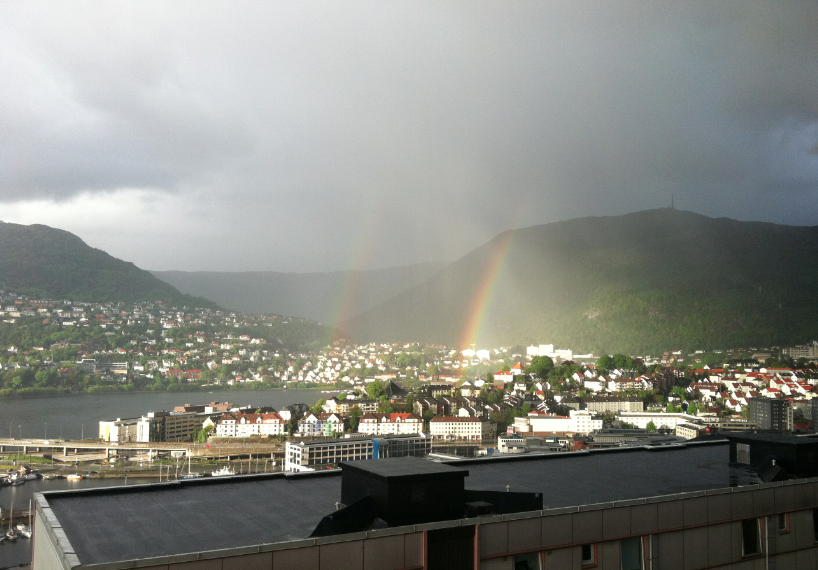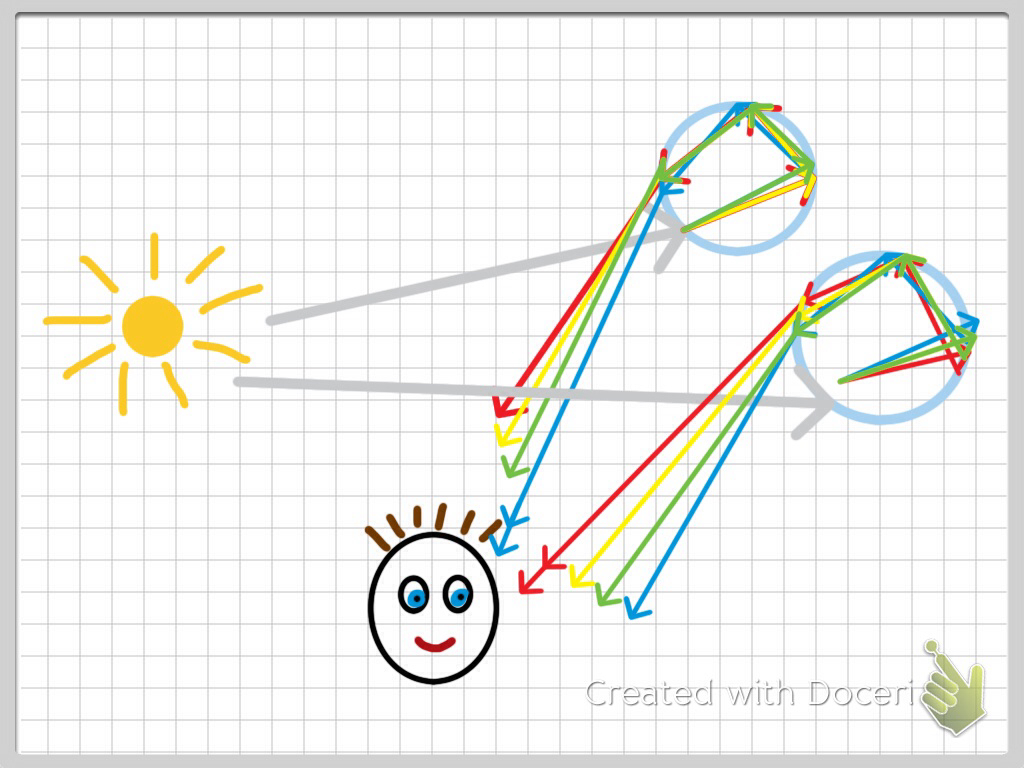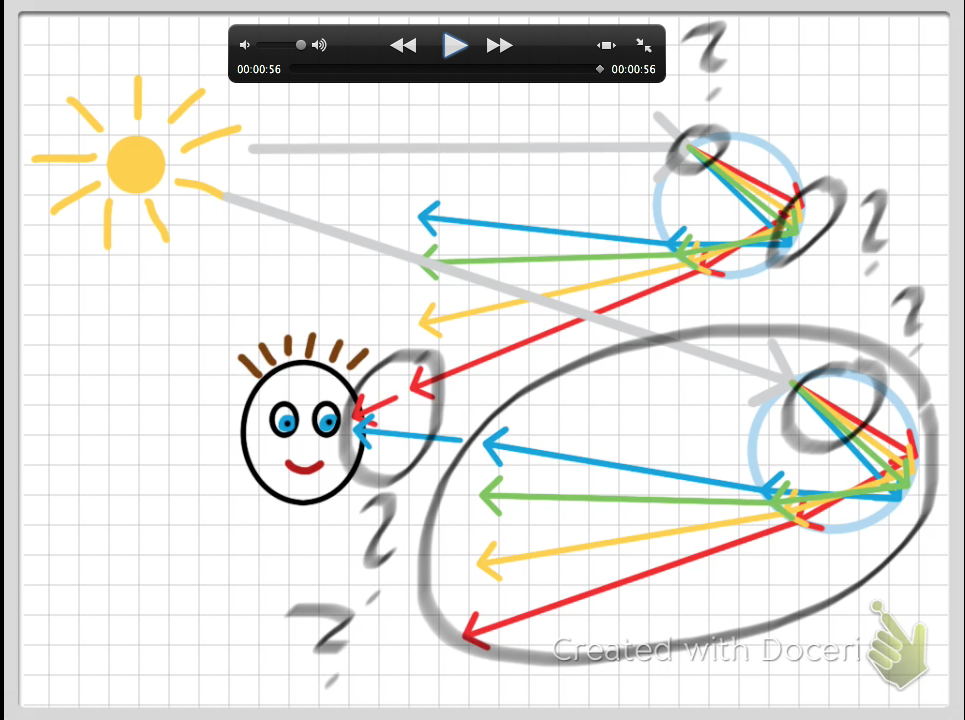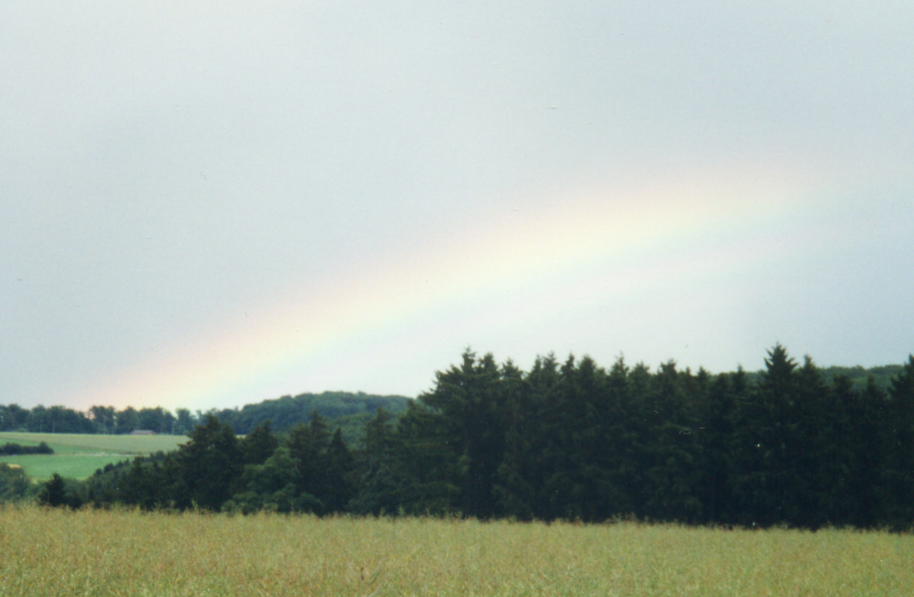More reflection or more rain?
Ha, aren’t you enjoying talking about optics again?
Sometimes you see two rainbows that both have red on the outside and blue on the inside. And according to my post on secondary rainbows, that should not be the case. Yet is has been observed. Why?
As you remember, secondary rainbows form outside the primary rainbows because the light is reflected twice inside the raindrop rather than only once as in the case of a primary rainbow. But that second rainbow with red on the outer rim and blue on the inner is formed differently.
Until now we’ve assumed that all the rainbows appear on the same rain front. This is not the case for the rainbow we are talking about here – it is formed on a second rain front behind the first one. So the path of light within rain drops of both rainbows on both fronts is similar, with light being only reflected once for each rainbow.
When you google double rainbows, you sometimes find pictures of two rainbows, both with red on the outer rim, nicely separated from each other. And when you see those pictures, you can be pretty sure that they’ve been photoshopped. Double rainbows of the kind we are talking about here overlap, and usually you see one full rainbow with all its colors, and then a slightly smaller rainbow with only green, blue and purple peeking out:
